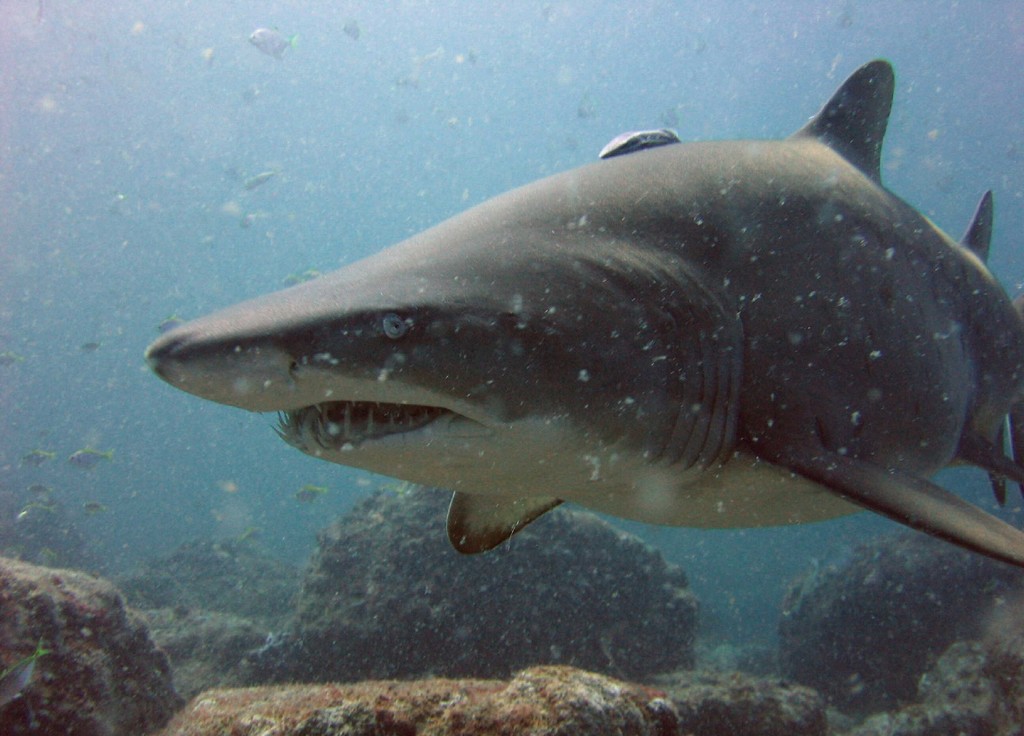In Utero Fight Club

The grey nurse shark, pictured above, survives on a diet of fish, rays, shellfish, and — it’s a cannibal — other sharks. That last part is a habit they acquire at an early age — in the womb.
Grey nurse sharks have two uteri and, regularly, give birth to two offspring at a time. During the two year (!) gestation period, though, more than two viable shark fetuses form, however. What happens to all the in utero shark babies? A battle to the death, literally.
Inside each uterus, the shark fetuses fight each other until only one remains. The remaining fetus then uses his fallen siblings as food, providing nourishment to the developing victor for most of the gestation period — something called intrauterine cannibalism. Intrauterine cannibalism is also seen in other sharks (including the great white, perhaps best known for playing the protagonist in Jaws).
When the “food” runs out? For grey nurse sharks, the mother simply makes more, releasing eggs which, of course, are consumed well before they are able to put up a fight (and in most cases, before fertilization). And the shark fetuses aren’t discriminating — as Wikipedia notes, “[t]here are reports of biologists probing the bellies of landed females and having their fingers nipped by the cannibalistic young with their fully developed teeth.”
Yikes.
Bonus fact: The production crew of Jaws used three mechanical sharks to play the role of Jaws, one of which can be seen here. The sharks, while resilient, found the salt water of the ocean troublesome for their respective hydraulic systems. Because of this, it was easier to film just the dorsal fin of the shark than, say, the entire thing. The end result: many scenes have ominous appearances by the shark, with the rest of the creature submersed and out of view.
From the Archives: Redefining Nemo: Clownfish have a neat reproductive cycle, too — they change genders.
Related: This.

Leave a comment